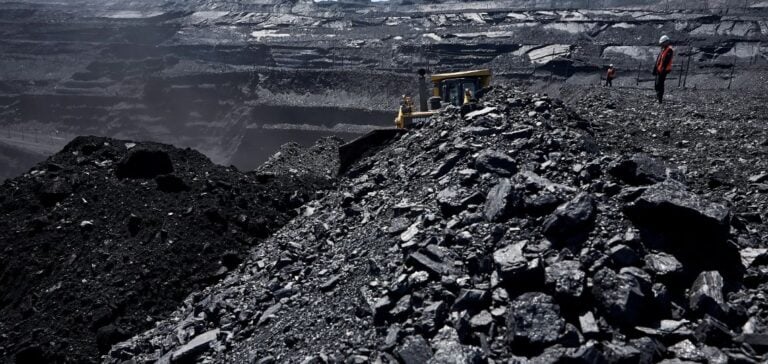In a world facing growing energy demand, coal stands at a crossroads. The year 2024 marks a historic peak in consumption, reaching 8.77 billion tonnes according to the **Coal 2024** report by the International Energy Agency (IEA). Yet, this rise may well be the last of its kind. Thanks to the rapid growth of renewable energy and shifts in Asian markets, global coal consumption is set to stabilize, heralding a new era where coal may lose its position as an indispensable energy source.
China: An Energy Transition Under Close Watch
China, the world’s largest coal consumer, epitomizes the challenges and opportunities of the sector. Consuming one-third of global coal volumes, Beijing’s decisions directly influence international markets. But China is not just a consumer; it is actively investing in diversifying its energy mix.
In 2024, China launched an ambitious program to construct new nuclear plants and significantly expand its solar and wind capacities. These measures are not merely symbolic—they reflect a strategic intent to reduce coal dependency while addressing a surging electricity demand fueled by the electrification of transport, data center development, and rising cooling needs.
However, the future of coal in China remains uncertain. According to the IEA, unpredictable climate factors could cause the country’s coal consumption to deviate by as much as 140 million tonnes by 2027. Such variability could challenge forecasts and test global energy models.
Advanced Economies Retreating from Coal
While China serves as the pivot of global coal markets, advanced economies are taking a different path. In regions such as the European Union and North America, strict environmental policies and the rise of alternative energy sources like natural gas are accelerating coal’s decline. According to the IEA, demand in these regions has already peaked and is expected to continue its steady decline through 2027.
This retreat is not without challenges. Balancing economic competitiveness with energy transition remains critical, particularly for energy-intensive industries. However, these regions demonstrate a structural shift where the profitability of clean energy increasingly surpasses that of coal.
Emerging Markets Sustaining Pressure
Conversely, countries like India, Indonesia, and Vietnam are continuing to increase their coal consumption. These rapidly growing economies see coal as an immediate solution to their demographic and industrial expansion. Electricity, the primary driver of this demand, is accompanied by increased coal use in industrial sectors such as steel and cement.
Nevertheless, this rising dependence could become a burden in the medium term. Fluctuating coal prices, which remain 50% higher than the average between 2017 and 2019, strain importers’ budgets. Additionally, the push to diversify energy supplies, especially in Asia, is creating tensions in global markets.
International Trade Under Pressure
Despite a record 1.55 billion tonnes of coal traded internationally in 2024, the long-term outlook for coal trade appears dim. The decline in thermal coal imports, in particular, reflects the rise of renewable energy and national energy transition policies.
Asia, home to the largest importers (China, India, Japan, Korea, Vietnam) and exporters (Indonesia, Australia), remains the epicenter of global coal trade. However, shrinking demand in some segments, coupled with rising local renewable energy production, may permanently alter regional dynamics.
A Sector in Transition
Coal, a cornerstone of the industrial revolution, now faces a radical transformation. While emerging markets continue to drive demand in the short term, advanced economies show that a less coal-dependent world is possible. This duality reflects a global energy sector where tradition and innovation coexist—for now.






















